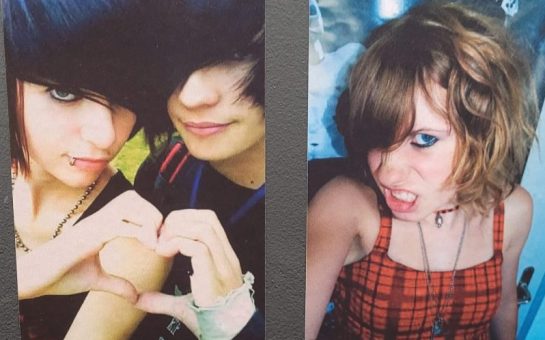Polish-born artist Radek Husak has launched a new LGBTQ+ celebrating exhibition, providing a timely confrontation to the Qatar World Cup, reminding people to appreciate their bodies and express themselves.
Inspired by Andy Warhol, in particular the 1963 Double Elvis series, and the pop-art of 1960s America, Husak forces the viewer to confront the modern taboo that the male body should remain private, through illusions of movement and clashes of colour.
In 2019, Husak was selected for Photo London’s Discovery section and recently partnered with Quantus Gallery and Grove Gallery to launch his new exhibition Duality on 23 November.
Nanette Salomon, in the Venus Pudica, described how from the origins of Grecian art: “The male figure is dynamically explored as an internally logical, organic unity; the female body is treated as an external surface decoration.”
In a challenge to this, Husak’s artwork is a reminder that men should not be ashamed or shy of their bodies, despite being under-represented in classical art.

His work draws on elements of queer theory, so that he can challenge the classical tradition’s use of the female figure to represent beauty, to desensitise the idea that male nudity should be private and taboo.
Husak said: “I want to take that one aspect, that fear of male nudity, and confront the modern spectator with that in my work.”
Additionally feeding into conversations on men’s mental health during November, Husak explains that it is about empowering men that struggle to accept their bodies.
Husak elaborated: “I think we are living in a culture that is so body centric and I think that if you remove yourself from all that objectivity and portrayal of the male body, you can appreciate your own a bit more.”

Another key concept of Husak’s work is about creating movement on a flat surface.
He explained: “I am trying to find what is in between when the bodies collide, and intertwine, what is created in that middle point, perhaps nothing, but to me there is that depth of textures and a sense of void that could be re-interpreted from an everyday spectator.”
Husak found that going through lockdown forced him to reflect, and gave him the time to slow down, as it did for many people.
He said: “It really influenced the way I work.
“Now there is less haste and I will spend more time getting ready and making sure everything is prepared the way it should be, so I think that is what I am taking away from the lockdown – the element of reflection.”
It was also the pandemic that inspired the recent use of colour in his artwork.
He explained: “Colour was my way to express and cheer myself up, however, right now it tries to re-enhance and reinforce the general mood or feel of the work.
“Also people have very strong opinions about the colours they like and very often I will clash them consciously to make the tension and excitement within a work.”

After launching on 23 November, his exhibition Duality now welcomes people to take in Husak’s expression of male empowerment.
At the launch, the message of his work even walked about the gallery in the figures of the two half-nude male waiters refilling people’s glasses with wine and prosecco.
Excited to see and learn from the reactions viewers have of his artwork, Husak revealed that the exhibition’s title Duality refers to many aspects of his work: the duality of the humble materials like aluminium he uses to present a divinity of the male body, and the duality of movement with the void of static space where the bodies collide.
He said: “I am trying to express myself through other people, through other bodies, so it is definitely about the empowerment, and taking the time to be kinder to yourself, to look at yourself with that bit more appreciation.
“I think my work, especially the works at Duality, express that sense of haste, disgust, but also joy and appreciation for one another, almost what will be presented is in a sense a mental picture of what the male form means to me.”

At the exhibition, Husak said that his works were like his “babies” and it was hard to show some of them to the public.
Taking such a long time to create, allowing him to learn so much in the creative process, each piece of art is a part of him and deeply personal.
Feature Image credit : Jasmine Laws





Join the discussion